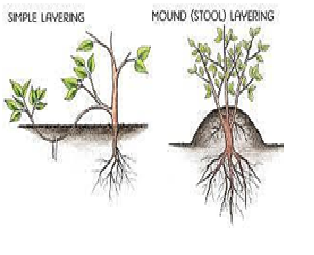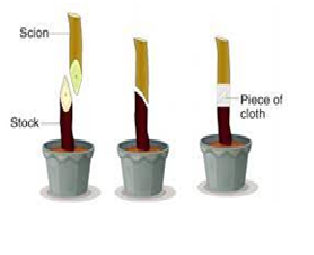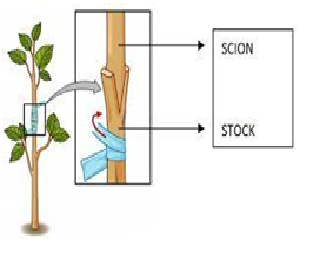

When a branch of shrub touches the ground, it produces roots and forms a new plant. This method is called……….
a) cutting
b) tissue culture
c) grafting
d) layering
Explanation:Layering is a technique of plant propagation where the new plant remains at least partially attached to the mother plant while forming new roots and can occur naturally through modified stem structures

In
which of the following artificial vegetative propagation method, two plants are
combined?
a) cutting
b)
tissue culture
c) grafting
d) layering
Explanation:Grafting is a method of asexual plant propagation that joins plant parts from different plants together so they will heal and grow as one plant.

In
grafting, the roots and the bottom portion of one plant is attached with other
plant. It is called…….
a) rootstock
b)
scion
c)
bud
d) tuber
In grafting, the roots and the bottom portion (rootstock) of one plant is attached to shoot from the top portion of another plant. It is called…….
a) rootstock
b) scion
c) bud
d) tuber
Explanation:Both rootstocks and scions are propagated using vegetative techniques. The selected rootstocks for pome and stone fruits, which affect the growth and survival of the scion cultivar in many beneficial respects (see below), are all propagated asexually (vegetatively).

Grafting method
can be done for……….
a) grain plants
b)
non-flowering plants
c) fruits trees
d) flowering plants
Advantages of Vegetative Propagation: